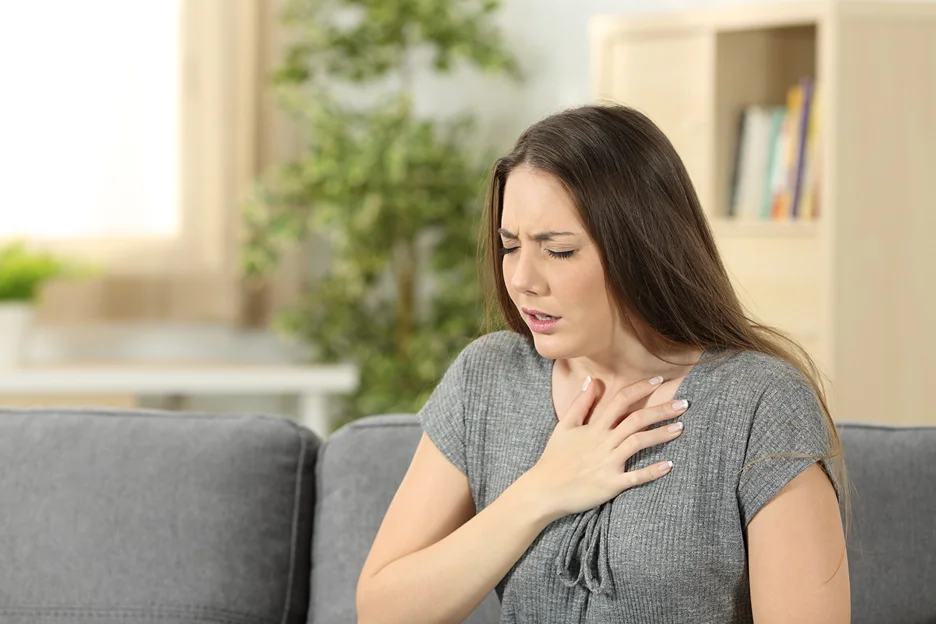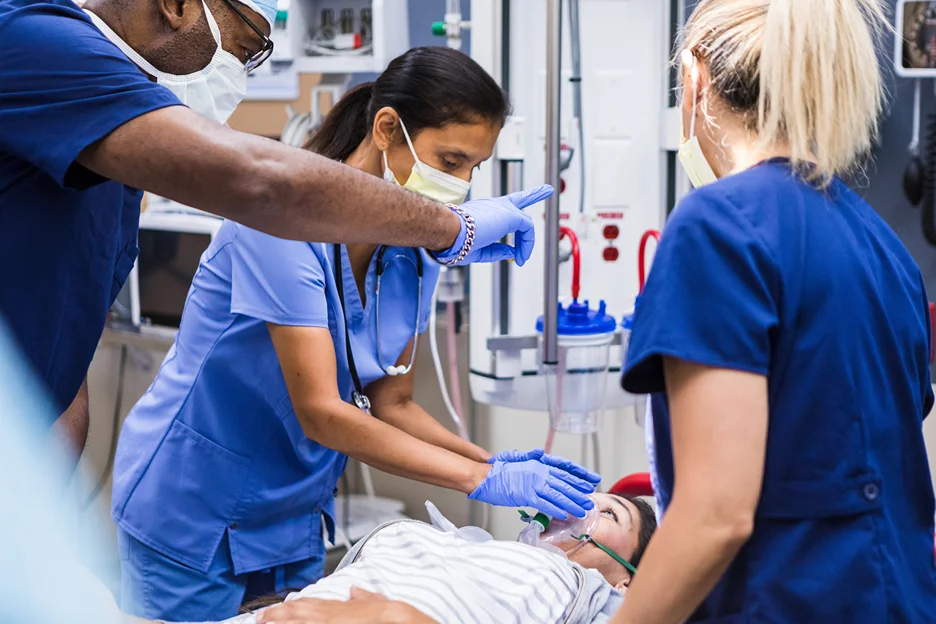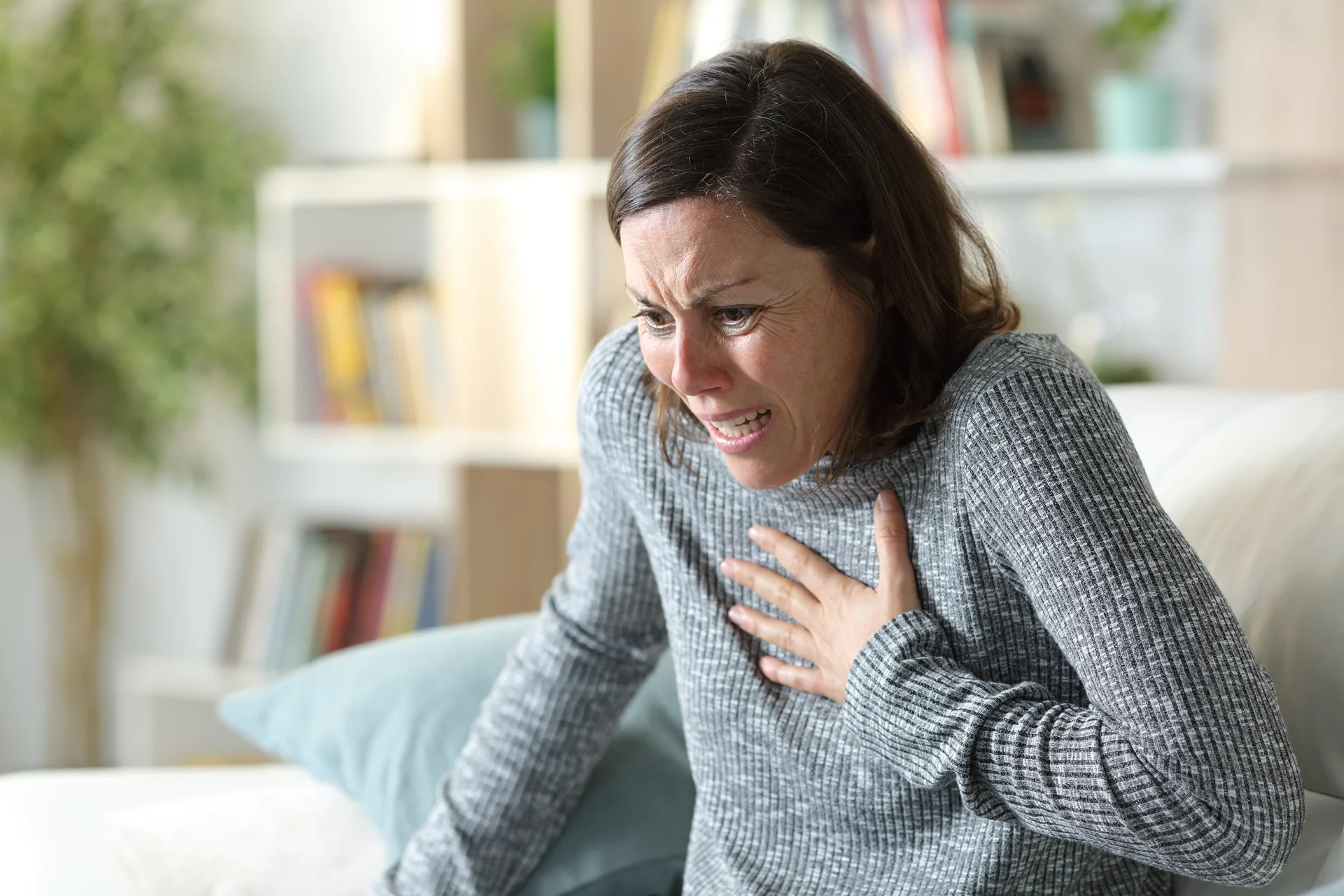Discover the common causes of chest pain and effective treatment options. Don’t ignore this symptom – find relief now.
Feeling like an elephant is sitting on your chest can be frightening.
In this guide, you’ll uncover the reasons behind chest pain, whether it’s on the left side, back, or above the left breast.
From heart and lung issues to digestive problems and panic attacks, you’ll gain insight into what might be causing your discomfort.
Understanding these potential causes will empower you to know when to seek help and how to address your specific situation.
You’ll also explore the treatment options available for each cause, giving you the knowledge to make informed decisions about your health.
By diving into this comprehensive resource, you’ll be better equipped to navigate chest pain and take steps toward relief and recovery.
Heart Conditions

If you experience severe, persistent chest pain, especially on the left side or back, seek immediate medical attention as it could be indicative of a heart condition.
Heart conditions can cause chest pain in various ways. For women, symptoms of a heart attack may include chest pain, as well as pain in the arm, back, neck, or jaw.
Pericarditis is another condition that can lead to chest pain on the left side or back. It’s important to note that chest pain from heart conditions can occur anywhere in the chest.
If you experience chest pain accompanied by dizziness, it’s crucial to seek immediate medical attention.
Treatment for heart conditions causing chest pain will depend on the specific underlying cause, so it’s essential to consult a healthcare professional for proper evaluation and management.
Lung Conditions
Lung conditions can cause chest pain on the left side and are often accompanied by other respiratory symptoms. If you’re experiencing chest pain and any of the following, it could indicate a lung condition:
- Pneumonia can lead to chest pain on the left side, often accompanied by coughing and difficulty breathing.
- Seek medical attention if you experience chest pain along with shortness of breath or coughing up blood.
- Treatment for lung conditions causing chest pain will vary based on the specific diagnosis, and may involve medications, breathing exercises, or physical therapy.
- Follow your doctor’s recommendations and attend regular check-ups to manage and monitor lung conditions effectively.
Taking care of your lung health is crucial for overall well-being, so don’t hesitate to seek medical advice if you experience chest pain along with respiratory symptoms.
Gastrointestinal Issues
Gastrointestinal issues causing chest pain above the left breast can occasionally lead to discomfort and may require medical attention.
Heartburn is a common culprit, with the pain often worsening after eating or lying down. Gallbladder disease and peptic ulcers can also trigger chest pain in this area.
If you have a history of gastrointestinal problems and experience chest pain, it’s crucial to consult a doctor.
Treatment for gastrointestinal issues causing chest pain will involve managing the underlying condition, which may include dietary changes, medications, or other interventions. Your doctor can provide guidance on how to alleviate the discomfort and prevent future episodes.
Taking proactive steps to address gastrointestinal issues can help reduce chest pain and improve your overall well-being.
Panic Attacks
When experiencing chest pain on the left side or back, consider panic attacks as a possible cause. Panic attacks can lead to chest pain or discomfort on the left side or back. If you suspect a panic attack, try relaxation techniques such as deep breathing.
Here’s what you should know about panic attacks causing chest pain:
- Chest pain from panic attacks may be accompanied by rapid breathing and a sense of impending doom.
- Seek medical attention if you’re unsure about the cause of your chest pain.
- Treatment for panic attacks may involve therapy, medication, or a combination of both.
- It’s essential to reach out for support and work with healthcare professionals to manage panic attacks and their symptoms effectively.
Muscle Strains
Consider muscle strains as a potential cause when you experience chest pain on the left side or back, especially if the pain worsens with movement or deep breathing.
Muscle strains in the chest or back area can result from sudden movements, overexertion, or poor posture. Here’s a helpful table to understand more about muscle strains:
| Muscle Strains | Symptoms |
| Chest | Pain that worsens with movement or deep breathing |
| Back | Tenderness, swelling, or bruising in the affected area |
If you suspect a muscle strain, give yourself time to rest and avoid activities that exacerbate the pain.
Applying cold packs can help reduce inflammation and discomfort. However, if the pain persists or worsens, it’s crucial to consult a healthcare professional for further evaluation and treatment.
Seeking Medical Attention

If you experience severe or persistent chest pain, seek immediate medical attention to ensure proper evaluation and treatment.
Here’s what to consider:
- Call Emergency Services: If the chest pain is intense and accompanied by dizziness, nausea, or shortness of breath, call emergency services immediately.
- Go to the Nearest Emergency Room: If the pain is severe and persistent, head to the nearest emergency room for a thorough evaluation.
- Contact Your Healthcare Provider: If the chest pain is new or unusual for you, contact your healthcare provider for guidance on the next steps.
- Don’t Delay: It’s crucial not to delay seeking medical attention when experiencing severe or persistent chest pain. Prompt evaluation can lead to timely treatment and better outcomes.
Treatment for Heart Conditions
Seek immediate medical attention if you experience severe or persistent chest pain, as proper evaluation and treatment are crucial for heart conditions.
Treatment options for heart-related chest pain depend on the specific diagnosis and may include medication, lifestyle changes, or medical procedures. Here’s a breakdown of treatment options for heart conditions causing chest pain:
| Treatment Option | Description |
| Medication | Prescribed to manage high blood pressure, cholesterol, or to prevent blood clots. |
| Lifestyle Changes | Involves adopting a heart-healthy diet, regular exercise, quitting smoking, and managing stress. |
| Medical Procedures | May include angioplasty, stent placement, or bypass surgery to improve blood flow to the heart. |
It’s essential to follow your doctor’s recommendations and attend regular check-ups to monitor your heart health. Always communicate any concerns or changes in your condition to your healthcare provider for ongoing support and guidance.
Treatment for Other Causes
To continue the discussion from the previous subtopic, explore treatment options tailored to address the specific causes of chest pain, emphasizing the importance of seeking appropriate medical care for individualized management.
Treatment for Other Causes
- Gastrointestinal Issues: If you have a history of gastrointestinal problems and experience chest pain above the left breast, consult a doctor. Treatment involves managing the underlying condition.
- Panic Attacks: If you suspect a panic attack, try relaxation techniques such as deep breathing. Seek medical attention if you’re unsure about the cause of your chest pain. Treatment may involve therapy, medication, or a combination of both.
- Lung Conditions: If you experience chest pain along with difficulty breathing, seek medical attention. Treatment for lung conditions causing chest pain will depend on the specific diagnosis.
- Muscle Strains or Injuries: Rest and avoid activities that worsen the pain. Apply cold packs to the affected area to reduce inflammation and pain. If the pain persists or worsens, consult a healthcare professional for further evaluation and treatment.
Take the necessary steps towards relief and recovery by staying informed and proactive

Now that you understand the various causes of chest pain on the left side, back, or above the left breast, you’re better equipped to recognize when to seek medical attention and how to address your specific situation.
Whether it’s a heart condition, lung issue, gastrointestinal problem, or panic attack, knowing the treatment options available will empower you to make informed decisions about your health.
Contact Kaly today to learn more about female chest pain so we can connect you with the best specialist to help you.
